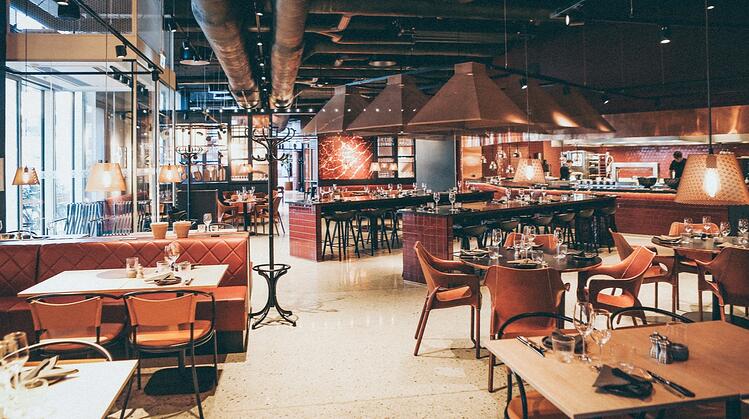How Contactless Ordering Impacts On-Premise Foodservice Revenue In Hotels

In order to get your guests placing orders from on-premise restaurants, services and gift shops, first they have to feel safe enough to do so. By offering an alternative, touchless ordering option, guests can simply pull out their phone, scan a QR code or enter a URL, view all on-property and retail options available, and place an order directly from there. This increases guests’ willingness to order in a couple of ways: They don’t have to leave their rooms to explore what’s available within the property; They don’t have to touch the phone to call the front desk and place an order; They don’t have to physically interact with a waiter or waitress to order; They don’t have to pass around credit cards to complete a transaction (if they choose to pay with card). Not only is the entire process safer and more sanitary, but it’s also easier, more convenient and more on-demand. What we’ve seen is that hotels that roll out contactless ordering options tend to see more of their guests willing to order from on-premise restaurants and gift shops during their stays. The more orders you get, the more revenue you’ll receive.
Be it on-premise F&B outlets, nearby restaurants or even gift shops, guests can scan a QR code and place an order directly in their web browser.
Increase Basket Sizes
This is a huge reason why we love online and mobile ordering so much — people almost always place larger orders when they’re ordering on their smartphones. While we operate in over dozens of markets and we understand that each partner is different, one trend is common across the board — average order value is larger on our platform and steadily increases over time. This makes total sense. The user interface on the phone makes it easy for customers to explore all options by just tapping between different menus, and upon checkout, there are up-sell and cross-sell reminders encouraging them to add more items to the cart. Additionally, businesses have more flexibility to edit their menus and bundle up top-sellers to provide a better deal, and thus increasing the average order value. Another reason for that is people tend to be under less pressure when they’re ordering on their phones, without having a server waiting for them to make a decision, or a line of people behind stressing them out. As a result, they tend to take more time exploring all options and add more items to the cart within one order.Increase Order Frequency
Another way we see hotels increase revenue on a contactless ordering platform is by increasing the average order frequency per guest. As much as possible, we’d like for visitors to make multiple purchases during their stay, be it ordering from on-premise F&B outlets, gift shops, or other services such as spa and massage. The way that online and mobile ordering achieves that is by making it effortless for someone to place an order. All they have to do is pull up their phone and order within a few minutes. When something is that convenient and on demand, chances are people are more likely to order whenever they have an inclination to do so, whereas a lengthier process such as calling the front desk or interacting with a server might deter them. This phenomenon is common across markets too. At drive-in theaters, we see more people ordering a second time before the second movie showing, knowing that they don’t have to leave the car or wait in line. At sports games, we see fans making multiple purchases whenever they realize they’re running low on beer, or just want some additional snacks after a meal. The same thing applies to the hotel industry. Whenever a guest feels the need to add more items to their order, they won’t hesitate placing another order even after they’ve made one purchase already.Increase the Speed of Service
Increasing the speed of service means a kitchen can serve more guests within the same amount of time. Especially during peak hours, having a more streamlined workflow to serve more guests faster means more revenue generated.
The way contactless ordering works is automating as many steps in the order management process possible and removing the friction points. From the moment a guest places an order, to the order hitting the kitchen on the Kitchen Display System, to a receipt printer printing out a receipt, to the kitchen preparing the order, to the customer receiving real-time updates on their order status…every step along the way is automated and requires no manual input. Your kitchen only needs to focus on order preparation, whereas our system handles everything else along the way.
Not only does this mean the kitchen can receive an order faster and get on the preparation right away, but also it helps focus your staff on more important matters such as food quality and offering help to customers. The faster speed of service and higher customer satisfaction rate would eventually translate to higher revenue.
To see how the platform works in a hotel setting, as well as our customization capabilities to showcase your brand, feel free to request a chat with our team by submitting the form here.

